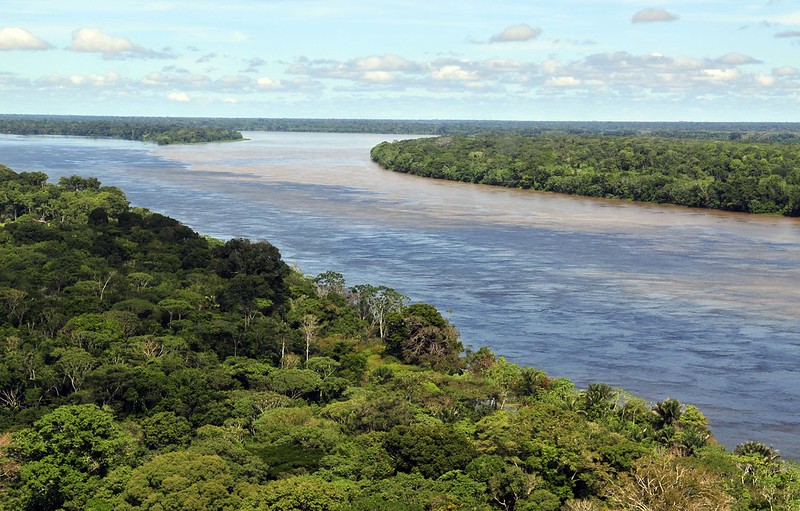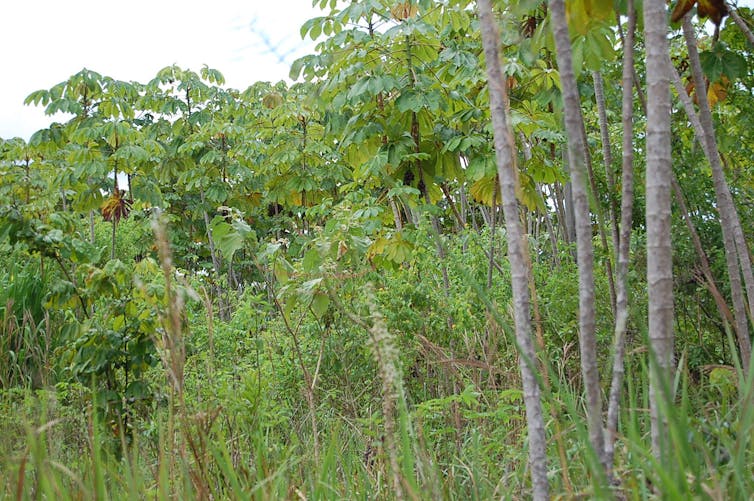Environment & Nature
Amazon: regrowing forests have offset less than 10% of carbon emissions from deforestation

Driven largely by the expansion of farm land to meet increasing global demand for products such as soya bean, over 810,000 km² of forest in the Amazon has been cleared – an area nearly as big as Norway and Sweden combined.
Deforestation is not only a tragedy for biodiversity, it also releases huge quantities of carbon dioxide (CO₂) into the atmosphere. Despite a glimmer of hope in the early 2010s, when deforestation rates plummeted to an all-time low, forest loss is once again on the rise.
The bulldozers aren’t always the end of the story. Nearly 30% of deforested land in the Amazon has been abandoned, giving the forest a chance to regrow – albeit with differing degrees of success, depending on how long and how intensely the land was used for agriculture. While these recovering habitats, known as secondary forests, are a poor substitute for the species-rich old-growth forests they replace, they can rapidly capture large quantities of CO₂ from the atmosphere.
But in a new study, we discovered that secondary forests across the Amazon are absorbing just 9.7% of the emissions created by the destruction of old-growth forests in the region. That’s despite these regrowing habitats occupying 28.8% of all deforested land.
Restoration versus deforestation
Although the Paris Agreement assumes that there will need to be some degree of tropical forest restoration to achieve emissions reduction targets, few studies have assessed how forest cover in the Amazon is changing. Research in the Amazon tends to focus on Brazil, which holds 60% of the basin, but fails to account for the eight other countries. Understanding how forests are recovering differently between countries and regions can help scientists and decision-makers understand which countries’ policies are helping to maintain the forest carbon sink, and which are not.
We set out to fill this void by mapping deforestation, recovery and carbon stocks from 1986 to 2017 across the entire Amazon, as well as individually for its nine constituent countries, and Brazil’s nine Amazonian states.
We used land cover maps built from high-resolution satellite imagery by the MapBiomas initiative to establish where, when and how much carbon has been lost to deforestation. We combined this with similarly generated maps of carbon gained by secondary forests to work out what proportion of these emissions have already been offset.
We found big differences between countries in the amount of emissions offset by secondary forest growth. As Brazil contains more than half of the Amazon basin, it is unsurprisingly responsible for more deforestation than any other country. However, Brazil’s contribution to overall Amazon deforestation (85%) and the associated CO₂ emissions (80%) went well beyond what would be expected from the country’s size.
The Brazilian state of Pará alone has seen more deforestation than the other eight Amazonian countries combined, a staggering 263,000 km² – an area larger than the UK. Brazil is also falling behind the other countries on the amount of deforested land that is recovering. Just a quarter of Brazil’s previously deforested land is occupied by secondary forest, with these new forests offsetting just 9% of CO₂ emissions from deforestation. Ecuador, on the other hand, has secondary forest growing on over half of its deforested land. In Guyana, where the recovering forests are older and so have had time to capture more CO₂, nearly a quarter of deforestation emissions have been offset, the highest of any Amazonian country.

These country-level patterns were underpinned by a trend that extended across the entire Amazon basin. Regions that have undergone the most extensive deforestation – and so have the greatest potential for large-scale forest restoration – currently have the lowest rates of recovery. To make matters worse, these highly deforested Amazonian landscapes show no sign of increasing forest cover, even 20 years after the land was initially cleared.
Large-scale forest restoration in the Amazon is an important nature-based solution to climate change. The latest findings from the Intergovernmental Panel on Climate Change indicate that reaching net zero emissions is essential for stabilising global warming and nature-based solutions will be at the forefront of discussions at the UN climate talks in November 2021, otherwise known as COP26, where governments from around the world will develop a plan to reach net zero emissions globally.
But unless drastic changes are made to halt deforestation and encourage forests to regrow, the Amazon cannot fulfil its potential to mitigate climate change.![]()
Charlotte Smith, PhD Candidate in Environmental Science, Lancaster University; Erika Berenguer, Senior Research Associate in Tropical Forest Ecology, University of Oxford, and Jos Barlow, Professor of Conservation Science, Lancaster University
This article is republished from The Conversation under a Creative Commons license. Read the original article.





















